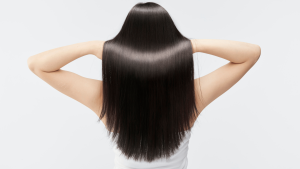There’s something unmistakably powerful about subtlety. In a time when fashion can be loud, fast, and fleeting, a quiet counter-movement has taken hold—one rooted not in logos or seasonal hype, but in texture, substance, and story. This is the era of quiet luxury, and its unsung heroes are the natural fibres we may have once taken for granted: wool, suede, hide, shearling.
These materials don’t scream for attention, but they demand respect. They age gracefully. They carry with them a legacy of craftsmanship and care, evident in every stitch and texture, from the supple softness of Handmade Sheepskin Cushions to the rich patina of well-worn leather. And they are exactly why discerning fashion lovers are turning toward brands like Hyde & Hare—not for the sake of nostalgia, but because authenticity, quality, and longevity have finally come back into style.

The Texture of Integrity: Why Natural Materials Are the Quiet Luxury We’ve Been Waiting For
Quiet Luxury Isn’t Minimalism—It’s Meaning
Let’s clear something up: quiet luxury isn’t just minimalism with a steeper price tag. It’s not about bland basics or beige-on-beige uniforms. It’s about investing in pieces that speak to values—materials that feel grounded, garments that feel personal, and textures that don’t change with the trends.
Natural fibres play a huge part in that. When you touch a hide bag or wrap yourself in a wool coat, there’s a sensory connection to the earth, the animal, and the artisan who shaped it. You can’t fake that. And unlike synthetic fabrics that wear out or pill after a season or two, natural materials hold their ground. They evolve with you.
Texture Is the New Status Symbol
We used to think of status in terms of exclusivity, logos, or the sheer size of a shopping haul. But a new wave of luxury is built on different cues—less performative, more perceptive. And one of the most telling signs? Texture.
Feel the buttery grain of real suede, the plush depth of genuine shearling, the tight weave of finely processed wool. These are luxuries you don’t see so much as sense. It’s tactile storytelling. That unspoken richness is exactly why a handmade hide weekender or a shearling-lined gilet reads as high-end without ever needing to shout.
It’s the opposite of disposable. And that’s the point.
Nature Made It Better From the Start
Natural fibres aren’t new—they’re ancient. But they’re having a renaissance for good reason. Unlike synthetic materials that require intensive processing and often break down into microplastics, fibres like wool and hide are biodegradable, breathable, and long-lasting by design.
Consider wool: it’s naturally insulating, odor-resistant, and self-regulating. It keeps you warm when it’s cold and cool when it’s warm. That’s something poly blends still try (and often fail) to imitate. Or look at shearling: it’s soft, resilient, and incredibly good at trapping heat. It doesn’t just feel luxurious—it functions that way too.
That’s the kind of quiet innovation no tech-fabric press release can compete with.
What Slow Fashion Looks Like When It’s Done Right
Quiet luxury goes hand-in-hand with slow fashion. This isn’t about seasonal turnover or trend-chasing. It’s about patience, precision, and pride in the product.
When brands work with natural fibres, they’re forced to respect the rhythm of the material. There’s no cutting corners. A well-finished hide takes time. So does properly treated wool. Each piece becomes a small act of defiance against fashion’s addiction to speed.
And it’s not just about sustainability on paper—it’s about creating garments that are worth repairing, worth passing down, worth holding onto.
Why Fast Fashion Can’t Compete
Let’s be honest: fast fashion is convenient, but it’s also crowded, chaotic, and full of compromise. Most garments are made for shelf appeal, not longevity. The fabrics feel flat. The fit fades fast. And while the price might be low, the real cost—ethical, environmental, and aesthetic—isn’t so easy to ignore anymore.
In contrast, something as simple as a hand-cut suede belt or a wool-lined slipper can feel like a quiet rebellion. There’s value in wearing something that isn’t trying to chase a trend. Quiet luxury is about confidence. And natural fibres deliver that without needing to prove anything.
The Return of Craft, and Why It Matters
Mass production made fashion accessible. But it also erased a lot of the human touch. With the resurgence of interest in natural fibres, we’re also seeing a renewed appreciation for traditional craftsmanship—the kind that values hand-stitching over shortcuts and precision over production quotas.
Every time you see slight variations in the grain of a hide or the weave of a wool scarf, that’s a reminder that what you’re wearing was made, not manufactured. It brings a kind of intimacy back to fashion. And in a world of fast everything, that’s rare.
Wardrobe Essentials with a Soul
Quiet luxury doesn’t mean you have to ditch bold silhouettes or color entirely. But the difference is in the intention. When your staples are made from real materials—wool coats, hide-trimmed bags, shearling-lined boots—you build a closet that doesn’t age out.
You might still rotate in trendier pieces here and there, but the backbone of your style becomes more personal and enduring. You’re not just buying an item—you’re curating a feeling.
How to Spot the Real Thing
Not all “natural” materials are created equal. If you’re leaning into quiet luxury, here’s what to look out for:
- • Texture you can feel: Genuine fibres have nuance—grain, nap, weight—that fakes can’t replicate.
- • Smell and sound: Real leather and wool have a scent. Real suede has a soft rustle. If it’s silent and scentless, be suspicious.
- • Edges and wear: Natural fibres break in, not down. They develop a patina, not plastic flakes.
- • Transparency from the maker: Brands that use natural materials with integrity are proud to talk about where and how they’re sourced.
If a label avoids those details, that’s a red flag.
Natural Fibres Are Timeless, Not Trendy
The best part about building your style around natural fibres? They don’t expire. These materials have been worn by shepherds, aristocrats, travelers, and designers for centuries. They carry history without feeling stuck in it.
And in an industry constantly chasing the next big thing, that kind of timelessness feels like a gift.

The Texture of Integrity: Why Natural Materials Are the Quiet Luxury We’ve Been Waiting For
Final Thought: Integrity Is the Ultimate Luxury
There’s a quiet kind of power in wearing something that tells the truth—about how it was made, where it came from, and what it stands for. That’s what natural materials offer.
They don’t need to convince you they’re valuable. You feel it the moment you put them on.

fashionabc is a fashion technology platform, comprising a digital directory and various other digital tools and supply chain solutions for the fashion industry ecosystem, that focus on ethical fashion and sustainability. We are building inclusive digital transformation tools for fashion professionals who are willing to take steps towards a more sustainable ethical fashion industry, by adopting AI and DLT blockchain technology.
* building digital profile and IP solutions for fashion businesses
* tackle issues such as provenance and counterfeit in supply chain
* contribute to the construction of a meritocratic ethical fashion industry which is certified and part of the circular economy










